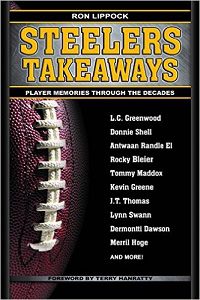First, can you let readers know what you’ve been doing with yourself since your time in the NFL?
After getting injured in Canada in 1971, I came back to Colorado and worked with my fathers construction company for about three years, but my love for golf lured me into the PGA apprentice program in 1974 and I spent about 25 years as a club golf professional. I got out of the business in 2001 and have been kind of semi-retired since.
You started in the NFL in 1967 with the Baltimore Colts. As a 16th round pick from a small school (Adams State) how did you prove yourself to the coaches to make the team?
I was a very similar receiver to Raymond Berry who was somewhat successful for a few years, and I think that because of his success, I might have got a little longer look than I would have otherwise. I did have a good work ethic, and wasn’t afraid to spend my time on the “special teams”
You were out of football in 1968 correct? What happened that season and how did you find yourself in Pittsburgh in 1969?
I chipped a transverse process in my neck in our last pre-season game in 1968 and spent the year on IR.
Both in Pittsburgh and Baltimore, who helped mentor you as a young player – both on and off the field – and how did they do so – any examples?
Raymond and Lenny Moore taught me how to play simply by watching them, which I had been doing for many years before the Colts drafted me. I also used to go to watch Lionel Taylor with the Bronco’s while I was in high school and college.
You played both linebacker and wide receiver. How did you manage to play two such divergent positions and which did you prefer, and why?
I’ve seen in several bio’s that I was listed as a linebacker, but I never was. I worked a little as a tight end, but was a bit small.
What kind of player were you? If people asked what you were like as an NFL player, how would you describe yourself?
I had great hands, and ran great routes, but was just a step or two slow. The bump and run was just becoming popular among defensive backs, and it took pure speed to combat those tactics, which I didn’t have.
I think if we would have thought of multiple receiver sets and motion by the receivers, my career would have been prolonged somewhere …. although probably not in Pittsburgh, as Stallworth and Swan were about to arrive.
Who were some of the toughest guys you lined up against – both in practice and on game days?
Mike Curtis was the toughest, Pat Fisher was the meanest
You came to Pittsburgh the first year of Chuck Noll’s time there. What did you notice about how players adapted to his coaching style, and what were your thoughts of him that season?
Chuck Noll was the defensive co-ordinator in Baltimore the whole time I was there. He brought Don Shula’s offensive playbook, verbatim, with him to Pittsburgh. It was a rather complicated offense and I was just beginning to get a handle on it after two seasons and three training camps.
I arrived in Pittsburgh right after our last pre-season game and a week before the first regular season game, and I recall that nobody including the assistant coaches knew the plays. We were practicing at the fairgrounds on a field that my high school team wouldn’t have practiced on, Three Rivers stadium was under construction, and we were to play our home games at Pitt stadium, and I really felt that I had taken a really big step backward coming from a Super Bowl team in Baltimore to a rather dis-organized situation in Pittsburgh.
Chuck Noll wasn’t a real nice or endearing man at that time, but winning and success breeds respect, and he certainly did achieve that.
How big of a role did humor play on that Steelers team and who were some of the guys that were the biggest characters on that team? What made them so – any examples?
There really wasn’t much humor or much reason for it on a 1 – 13 team. I don’t remember laughing very often that season. I had never been on a losing team before in any sport, and it was a new experience
You stopped playing after the ’69 season. What prompted that decision?
After the 1969 season, I was traded to San Diego. Lance Alworth, and Gary Garrison were still in their prime, and they had just drafted a receiver in the first and third rounds (Billy Parks and Walker Gillette) plus 1970 was the first NFLPA strike, which lasted about halfway through training camp. I just didn’t have much of a chance, and was released just before the first preseason game.
I caught on with a minor league team in Pottstown, Pa and had a wonderful season leading the league in scoring, and finishing 2nd in receptions, and was the leagues most valuable offensive player. No NFL team seemed interested in 1971, so I signed with the Vancouver BC Lions, but broke an arm in our first preseason game. two years and three operations later, I finally was out of the cast, but golf was becoming a greater lure than football, and my life headed in that direction.
Are the NFL and NFLPA doing enough for retired players, in your opinion?
Don’t get me started on the NFLPA or it’s multi-millionaire members… rather sore spot !!!
Steelers Takeaways fundraising drive!
Help keep these free interviews coming! If you can, please donate as little (or as much!) as you like by contributing to Steelers Takeaways here:
https://www.paypal.com/paypalme/pittsburghsports
Read more by former Steelers via the book Steelers Takeaways: Player Memories Through the Decades. To order, just click on the book:

